感谢EEPW和Intel提供的Intel Edison开发套件。

本楼为帖子内容索引。
~~~~~~~~~~~~~~~~~~~~~~~~~~~
3:爱迪生Edison的另一个blink -- Linux下的Mraa
感谢EEPW和Intel提供的Intel Edison开发套件。

本楼为帖子内容索引。
~~~~~~~~~~~~~~~~~~~~~~~~~~~
3:爱迪生Edison的另一个blink -- Linux下的Mraa
基于Intel® Edison的智能灯光控制系统
eepwnet
详细的开发方案
准备用Edison和配套的传感器做一个智能灯光控制系统——MikuSmartLight,本系统是基于Intel® Edison的室内环境智能管控系统的一个子系统是MikuQ物联网与智能家居的重要组成部分。因为Edison的体积非常小,只有邮票那么大,非常适合智能家居和智能可穿戴设备的开发。智能灯光控制系统内嵌Edison和传感器,可以实现远程开关灯和调色,定时智能唤醒等智能家居的功能。
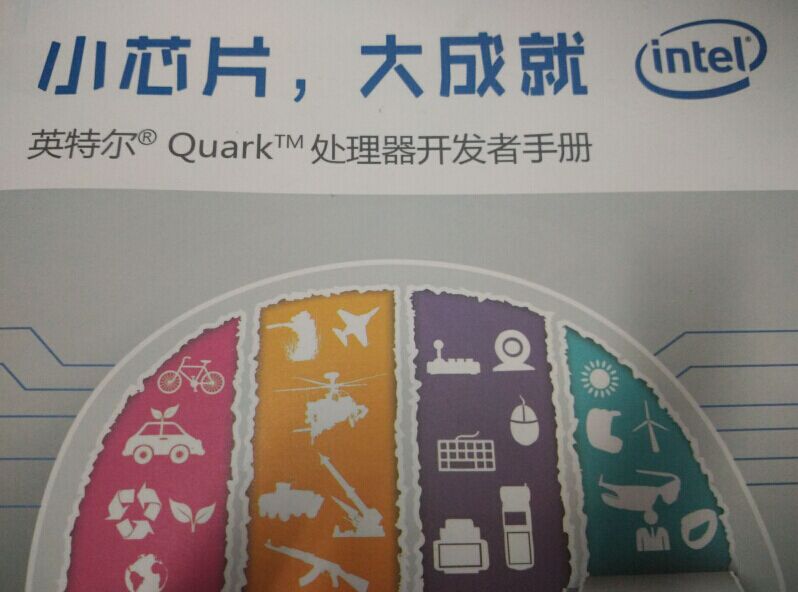
作为一个爱好者,曾参与过一些Edison相关制作文章的翻译,并获赠《英特尔® Quark™ 处理器开发手册》一书。
基于Intel® Edison的智能灯光控制系统,以Edison为核心,配合Grove - Starter Kit Plus套装,有效的实现对吸顶灯的开关和调色,需要完成如下几部分的工作:
1、多色吸顶灯的选择与改造
2、主控制器的嵌入与能源供应
3、灯光与环境光的采集
4、灯光强电控制及调色
5、云端网络的接入与控制
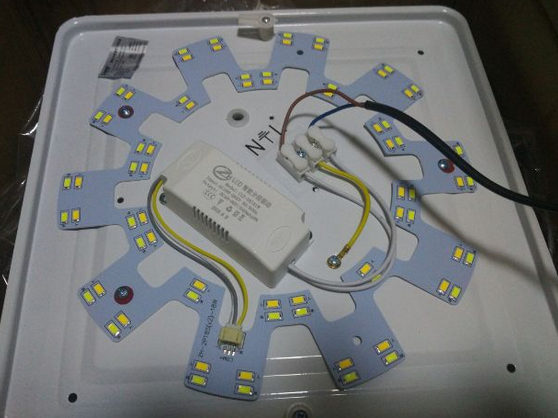
本次活动要实现的目标
智能开灯、智能关灯、智能调色、定时唤醒,融入社交元素,朋友远程协助开灯、朋友远程协助关灯、朋友远程协助调色等。
爱迪生发明了电灯,LED灯取代了电灯,现在是爱迪生来控制LED灯的时候啦!更多功能,敬请期待!

项目雏形:http://p.xuanq.top:8848/218.htm
就不秀什么开箱美图了,直接上手就用,不过也是奇怪,说好的只有SD卡大,怎么起码的诚信都没有啊。

好吧,不算底板,只算模块,可是那密密的70pin让人怎么用啊,也先不管了,找出配套的Grove包,配套足够全,不过里边的网线用在哪里去是没找到,有伙伴说是给伽利略2用的,真周到,配送的USB充电线看起来质量挺好的。
先插着看吧,发现了两个MicroUSB口,一般是先找调试口,发现角落有一个类似FT232的片子,估计就是这个了,装了驱动却没见板子亮,莫非错了,还是板子坏了,换另一个,终于亮起了绿灯,并且识别出了一个磁盘,或许也支持mbed吧。

还附送一个usb串口和一个usb网卡,驱动是用驱动软件搜的,装完要插拔一下usb才能识别,既然有个磁盘为啥不把驱动或者向导放在盘里呢,那样多方便。
下一步要做什么,一脸迷茫,听说支持Arduino,去搜搜看怎么用。
官方资料下载地址:https://downloadcenter.intel.com/product/84574/Intel-Edison-Board-for-Arduino-
发现了一个奇怪的现象,为啥1.0.3比1.0.4新?先随便下一个吧,都是好久没有维护过的了,选新的日期吧。
Version: 1.0.4 (Previously Released) Date: 10/16/2014 Version: 1.0.3 (Previously Released) Date: 2/3/2015
下载了一个传说中闪退了许久都没更新的Arduino IDE,据说解决办法已经写进了《Intel Edison智能硬件开发指南》,可是最近修补电脑,经济拮据,还是通过网络吧。
控制面板-〉区域和语言-〉更改日期、时间或数字格式-〉格式换成“英语(美国)”选择blink程序,板卡类型Edison和串口,直接运行,很顺利。

炫Q不走寻常路,也懒得看文档,试着来吧,上次链接串口,账号root没有密码,偶然发现了USB网卡的IP是192.168.2.15也不知道是随机的还是固定,既然这样,这次直接用putty尝试,竟然真的有ssh服务,账号还是root,没有密码。

尝试了一下gcc -v,也自带了gcc,这么来说,除了arduino开发应该也支持C来开发了,迅速找个hello.c测试一下。
#include <stdio.h>
int main(void){
printf("Hello, MikuQ.com!\n");
return 0;
}
编译用gcc -o hello hello.c,然后运行,一切顺利!

是否也能blink呢,这就需要查一下资料了,似乎需要一个较mraa的东西,开始查询如何安装,其实内置了,只是编译的时候要加上-lmraa和MikuDuino一样一样的,开始上blink.c
#include <unistd.h>
#include <stdio.h>
#include "mraa/gpio.h"
int main()
{
mraa_gpio_context gpio = mraa_gpio_init(13);
mraa_gpio_dir(gpio, MRAA_GPIO_OUT);
while(1){
mraa_gpio_write(gpio,1);
sleep(1);
mraa_gpio_write(gpio,0);
sleep(1);
}
mraa_gpio_close(gpio);
}
编译gcc -o blink blink.c -lmraa,运行./blink小灯如期闪动,不错不错!
材料准备
本次制作重点放在灯的改造上,需要准备以下材料:
三色调光LED吸顶灯x1
 好大的一个6元,对了就是6元还包邮,有的小伙伴花了3元比如小撸,我花了6.5元呢,反正很核算啦,说是三色,其实是冷色、暖色、双色三种。通过反复开关灯来控制变色。
好大的一个6元,对了就是6元还包邮,有的小伙伴花了3元比如小撸,我花了6.5元呢,反正很核算啦,说是三色,其实是冷色、暖色、双色三种。通过反复开关灯来控制变色。
MikuRelay低功耗继电器模块x1
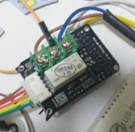 光耦隔离低功耗继电器,这个是MikuDuino系列的内供模块,省电又安全,一般市场上可买不到,也可以用普通继电器模块代替,建议选用带隔离的更安全。
光耦隔离低功耗继电器,这个是MikuDuino系列的内供模块,省电又安全,一般市场上可买不到,也可以用普通继电器模块代替,建议选用带隔离的更安全。
l
双路隔离电压采集模块x1
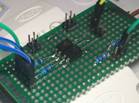 为了本项目在分析LED灯工作原理的基础上用洞洞板自制的采集模块,主要原理是通过分压和光耦隔离,安全采集LED灯的工作状态。
为了本项目在分析LED灯工作原理的基础上用洞洞板自制的采集模块,主要原理是通过分压和光耦隔离,安全采集LED灯的工作状态。
AC-DC电源模块x1
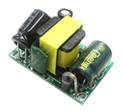 选用某宝上5V700ma的模块即可,大概5元左右,也可以由手机充电器中获得,由于采用低功耗设计500mA就足够,3.3V可以由小e提供。
选用某宝上5V700ma的模块即可,大概5元左右,也可以由手机充电器中获得,由于采用低功耗设计500mA就足够,3.3V可以由小e提供。
连接线若干
 可以某宝上搜“杜邦线”,基本几块钱就一大把,各种颜色都有,使用起来非常方便。
可以某宝上搜“杜邦线”,基本几块钱就一大把,各种颜色都有,使用起来非常方便。
其它工具
如烙铁、焊锡、镊子、插线板、螺丝刀等
搭建WEBSERVER
首先测试wifi环境,打开ScanNetworks项目运行
#include <SPI.h>
#include <WiFi.h>
void setup() {
//Initialize serial and wait for port to open:
Serial.begin(9600);
while (!Serial) {
; // wait for serial port to connect. Needed for Leonardo only
}
// check for the presence of the shield:
if (WiFi.status() == WL_NO_SHIELD) {
Serial.println("WiFi shield not present");
// don't continue:
while(true);
}
String fv = WiFi.firmwareVersion();
if( fv != "1.1.0" )
Serial.println("Please upgrade the firmware");
// Print WiFi MAC address:
printMacAddress();
// scan for existing networks:
Serial.println("Scanning available networks...");
listNetworks();
}
void loop() {
delay(10000);
// scan for existing networks:
Serial.println("Scanning available networks...");
listNetworks();
}
void printMacAddress() {
// the MAC address of your Wifi shield
byte mac[6];
// print your MAC address:
WiFi.macAddress(mac);
Serial.print("MAC: ");
Serial.print(mac[5],HEX);
Serial.print(":");
Serial.print(mac[4],HEX);
Serial.print(":");
Serial.print(mac[3],HEX);
Serial.print(":");
Serial.print(mac[2],HEX);
Serial.print(":");
Serial.print(mac[1],HEX);
Serial.print(":");
Serial.println(mac[0],HEX);
}
void listNetworks() {
// scan for nearby networks:
Serial.println("** Scan Networks **");
int numSsid = WiFi.scanNetworks();
if (numSsid == -1)
{
Serial.println("Couldn't get a wifi connection");
while(true);
}
// print the list of networks seen:
Serial.print("number of available networks:");
Serial.println(numSsid);
// print the network number and name for each network found:
for (int thisNet = 0; thisNet<numSsid; thisNet++) {
Serial.print(thisNet);
Serial.print(") ");
Serial.print(WiFi.SSID(thisNet));
Serial.print("\tSignal: ");
Serial.print(WiFi.RSSI(thisNet));
Serial.print(" dBm");
Serial.print("\tEncryption: ");
printEncryptionType(WiFi.encryptionType(thisNet));
}
}
void printEncryptionType(int thisType) {
// read the encryption type and print out the name:
switch (thisType) {
case ENC_TYPE_WEP:
Serial.println("WEP");
break;
case ENC_TYPE_TKIP:
Serial.println("WPA");
break;
case ENC_TYPE_CCMP:
Serial.println("WPA2");
break;
case ENC_TYPE_NONE:
Serial.println("None");
break;
case ENC_TYPE_AUTO:
Serial.println("Auto");
break;
}
}
找到所在的SSID,然后修改SimpleWebServerWiFi,由于我们的扩展板最大IO是D8所以修改代码中的9为8,添加LED模块,运行代码
void loop() {
WiFiClient client = server.available(); // listen for incoming clients
if (client) { // if you get a client,
Serial.println("new client"); // print a message out the serial port
String currentLine = ""; // make a String to hold incoming data from the client
while (client.connected()) { // loop while the client's connected
if (client.available()) { // if there's bytes to read from the client,
char c = client.read(); // read a byte, then
Serial.write(c); // print it out the serial monitor
if (c == '\n') { // if the byte is a newline character
// if the current line is blank, you got two newline characters in a row.
// that's the end of the client HTTP request, so send a response:
if (currentLine.length() == 0) {
// HTTP headers always start with a response code (e.g. HTTP/1.1 200 OK)
// and a content-type so the client knows what's coming, then a blank line:
client.println("HTTP/1.1 200 OK");
client.println("Content-type:text/html");
client.println();
// the content of the HTTP response follows the header:
client.print("Click <a href=\"/H\">here</a> turn the LED on pin 8 on<br>");
client.print("Click <a href=\"/L\">here</a> turn the LED on pin 8 off<br>");
// The HTTP response ends with another blank line:
client.println();
// break out of the while loop:
break;
}
else { // if you got a newline, then clear currentLine:
currentLine = "";
}
}
else if (c != '\r') { // if you got anything else but a carriage return character,
currentLine += c; // add it to the end of the currentLine
}
// Check to see if the client request was "GET /H" or "GET /L":
if (currentLine.endsWith("GET /H")) {
digitalWrite(8, HIGH); // GET /H turns the LED on
}
if (currentLine.endsWith("GET /L")) {
digitalWrite(8, LOW); // GET /L turns the LED off
}
}
}
// close the connection:
client.stop();
Serial.println("client disonnected");
}
}
运行结果
Attempting to connect to Network named: MikuQ SSID: MikuQ IP Address: 192.168. 1. 8 signal strength (RSSI):-38 dBm To see this page in action, open a browser to http://192.168. 1. 8
这样我们就可以通过手机浏览器访问192.168.1.8来控制LED了
| 有奖活动 | |
|---|---|
| 2026年“我要开发板活动”第三季,开始了! | |
| 硬核工程师专属补给计划——填盲盒 | |
| “我踩过的那些坑”主题活动——第002期 | |
| 【EEPW电子工程师创研计划】技术变现通道已开启~ | |
| 发原创文章 【每月瓜分千元赏金 凭实力攒钱买好礼~】 | |
| 【EEPW在线】E起听工程师的声音! | |
| 高校联络员开始招募啦!有惊喜!! | |
| 【工程师专属福利】每天30秒,积分轻松拿!EEPW宠粉打卡计划启动! | |
 我要赚赏金打赏帖 我要赚赏金打赏帖 |
|
|---|---|
| PTC与NTC功能常规对比被打赏¥14元 | |
| 【分享开发笔记,赚取电动螺丝刀】关于3pin锂电池接口的介绍/使用被打赏¥16元 | |
| 以启明云端ESP32P4开发板实现TF卡读写功能被打赏¥28元 | |
| 【分享开发笔记,赚取电动螺丝刀】树莓派5串口UART0配置被打赏¥25元 | |
| 【STM32F103ZET6】17:分享在Rtos项目中断管理的使用经验被打赏¥23元 | |
| 【STM32F103ZET6】16:分享在中断中恢复串口任务,遇到的问题被打赏¥31元 | |
| 在FireBeetle2ESP32-C5上实现温度大气压检测及显示被打赏¥21元 | |
| 【分享开发笔记,赚取电动螺丝刀】SAME51双串口收发配置被打赏¥27元 | |
| Chaos-nano操作系统在手持式VOC检测设备上的应用被打赏¥37元 | |
| 【分享开发笔记,赚取电动螺丝刀】关于在导入第三方库lib时,wchart类型冲突的原因及解决方案被打赏¥30元 | |